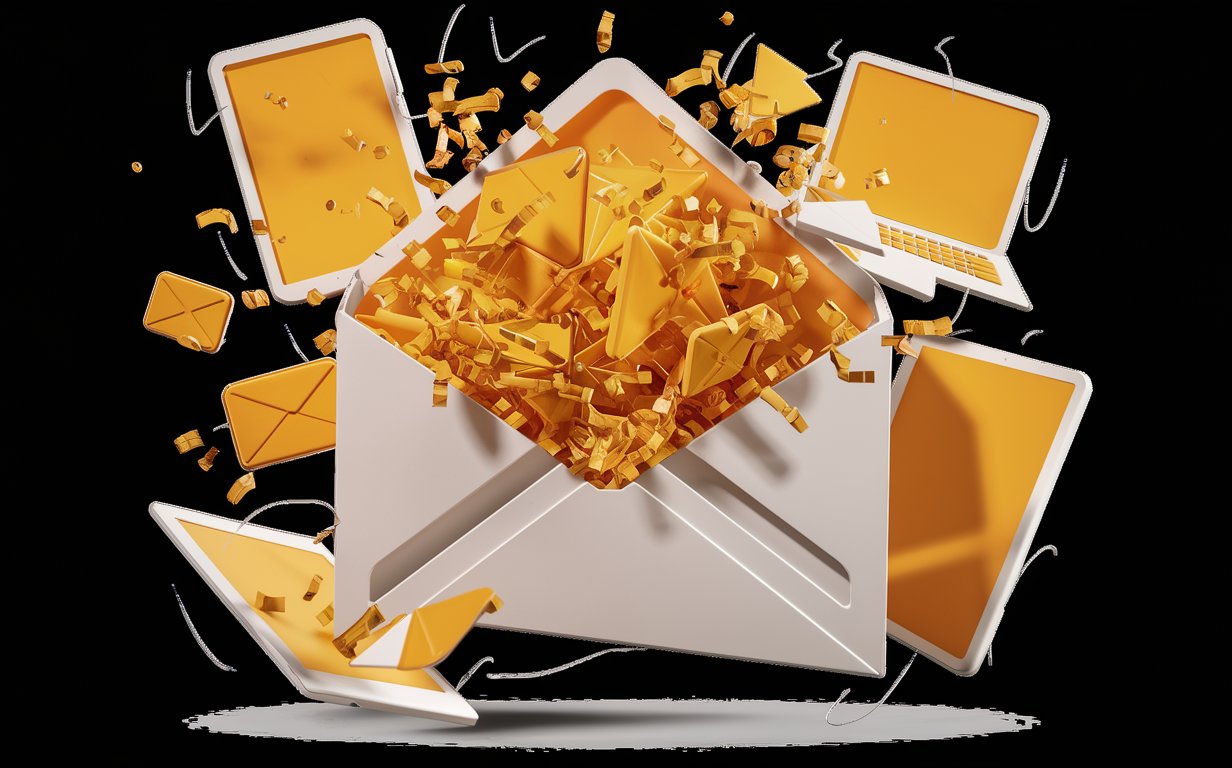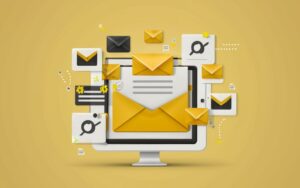What do email marketers and Santa Claus have in common? They both spend the whole year getting ready for one busy day.
For Santa Claus, that day is Christmas. For email marketers, it’s the holiday season. The National Retail Federation reports that, in 2021, holiday sales increased 14%, totaling $886.7 billion. And, in the United States, 2021 retail e-commerce sales increased 10.2% from 2020, totaling $952.6 billion. With the right email marketing strategy, you can get a piece of these holiday sales.
This guide will cover email automation best practices. Email automation can help you save time and resources, increase sales, and delight customers. All of this can be done with a few simple email campaigns.
1. Start With a Goal
What do you want your email to accomplish? What action do you want your email recipient to take? If your email doesn’t have a clear goal, it won’t be clear to your recipients, either.
Here are some common goals for email automation:
• To convert more leads into customers
• To upsell existing customers
• To increase average order value
• To increase customer retention
• To get more referrals
• To get more online reviews
Once you’ve established your goal, you can work backward to determine the content and design of your email.
2. Use a Simple
The best marketing is often the simplest marketing. Email is no exception. In fact, it’s even more important to keep things simple with email automation.
The temptation with email automation is to send super-complicated email campaigns. This is because we think that if we can do more, we should do more. But just because you can send more emails, doesn’t mean you should.
The best email campaigns are simple. This means they have one clear objective and one clear call-to-action. If you’re sending an email to announce a new product, your CTA should be to learn more about it. If you’re sending an email to thank your customers for their loyalty, your CTA should be to check out some of your new products.
Direct Call to Action
The goal of your email is to get subscribers to do something. Whether it’s to fill out a survey, visit a website, or make a purchase, your email needs a clear and concise call to action.
Don’t overthink it. A simple button or link with a short sentence will do. Just make sure it’s easy for your subscribers to know what you want them to do.
3. Use Personalization to Your Advantage
Personalization is a powerful tool in email marketing. It can help you build a stronger relationship with your subscribers and increase the likelihood that they’ll open and engage with your emails.
Personalization can take many forms, from using your subscriber’s first name in the subject line to creating dynamic content that’s tailored to their interests and preferences.
The more you can personalize your emails, the better. But even if you’re just getting started with personalization, there are some simple things you can do to make your emails feel more personal.
For example, you can use your subscriber’s first name in the subject line or opening greeting of your email. You can also use dynamic content to show different products or offers to different segments of your audience.
The key is to use the data you have about your subscribers to make your emails feel more personal and relevant to them.
4. Segment Your Audience
Not everyone in your contact database is going to be interested in the same products, services, or content. This is why it’s so important to segment your contact database.
Segmentation is the process of dividing your contact database into smaller, organized lists based on specific criteria. This could be anything from job title to location to past purchases.
By segmenting your contact database, you can send more targeted, personalized emails to your leads and customers. This, in turn, can help you increase engagement and conversions. This approach is particularly effective when you’re reaching out to different segments with tailored content, such as a specific business proposal for potential clients.
For example, if you have a list of contacts who are interested in a specific product, you can send them a targeted email with information about that product. Or, if you have a list of contacts who live in a specific location, you can send them a targeted email with information about a local event.
5. Create a Sense of Urgency
If you want your emails to be opened and acted upon, you need to give your recipients a good reason to do so. Creating a sense of urgency in your email subject lines is a great way to do this.
You can create a sense of urgency in your subject line by hinting that the offer inside the email is about to expire, or by using action-oriented language that suggests the recipient needs to act quickly. Words like “now,” “hurry,” “quick,” and “fast” can be effective.
6. Write Persuasive Copy
The most important part of your email, and the part that will take the most time, is the body copy. This is where you’ll engage your audience, build trust, and sell them on your offer.
The key to writing persuasive copy is to focus on your audience and their needs. Use the information you’ve collected about them to create a message that speaks directly to their pain points and desires.
Remember, you’re not just selling your product or service; you’re selling the benefits of taking action. Use your email to paint a picture of what life will be like for your audience after they’ve engaged with your offer.
Keep your copy short and to the point. You don’t need to write a novel in your email. Instead, use your copy to pique interest and encourage your audience to take the next step.
7. Use a Compelling Subject Line
The subject line is the first thing your recipients will see when they receive your emails. It’s important to make a good impression and get them to open your email.
To do this, you need to create a compelling subject line. This can be a challenge, but there are a few tips you can use to make it easier.
First, keep your subject line short and to the point. You should be able to get your message across in 50 characters or less. If your subject line is too long, it may get cut off in the inbox.
Next, use personalization. People are more likely to open an email when they feel like it was written just for them. You can use personalization tags to include your recipient’s name in the subject line.
Finally, make sure your subject line is relevant to the content of your email. If it’s not, people may be less likely to open your email in the future.
8. Test Everything
Email automation is a great way to save time, but that doesn’t mean you should cut corners. You should test everything in your emails, including your subject lines, calls to action, and images.
Testing your emails will help you figure out what works and what doesn’t. This will allow you to make improvements and get better results with your email automation campaigns over time.
9. Don’t Be Afraid to Follow Up
Not everyone will open your emails. It’s just a fact of life. But what’s not a fact is that if someone doesn’t open your email, it means they’re not interested.
If you have a good idea of who your most engaged contacts are, you can use that as a benchmark to determine who you should follow up with.
If someone hasn’t opened your email, you can send them a follow-up email with a new subject line. If someone hasn’t clicked on a link in your email, you can send them an email with a different call-to-action (CTA).
10. Use Triggered Emails
Triggered emails are sent automatically based on a specific event or action. For example, when a new contact subscribes to your blog, you might send them a welcome email. Or, if a customer buys a product from your website, you might send them a thank-you email and ask them to review the product.
These are just a few examples of how you can use triggered emails in your email marketing strategy. Triggered emails are a great way to engage with your contacts and customers, and they can help you build strong relationships with your audience.
11. Use the Right Email Automation Tools
As with any marketing tool, your email marketing and automation software matters.
Not all email marketing tools are created equal. Some are better for automation than others. Some are more user-friendly, while others offer more advanced features.
If you’re new to email automation, you might want to start with a tool that’s easy to use and offers plenty of automation templates. If you’re a seasoned pro, you might be more interested in advanced features like predictive sending and personalization.
No matter what, it’s important to choose the right tool for your business. If you’re not happy with your current email marketing software, it might be time to switch.
You can also use a CRM with built-in email automation features. This can help you streamline your marketing and sales efforts, since you’ll have all your customer data in one place.
12. Keep Your Emails Consistent
Email campaigns can help businesses engage with their leads and customers and can even help you improve your relationships with your customers over time. However, you can only expect to see these results if you are sending emails consistently.
When you send emails consistently, your contacts will come to expect them. This can help you build trust with your audience and can even help you increase your open rates.
To ensure that you are sending emails consistently, you can create an email schedule and stick to it. If you have a lot of emails to send, you can use email automation to schedule your emails in advance and even create an email series.
13. Avoid Spam Filters
If you’re sending out mass emails, you need to be aware of spam filters.
Spam filters are designed to protect inboxes from unsolicited emails, but they can sometimes catch legitimate emails by mistake. In fact, 20% of legitimate emails never make it to the inbox.
To avoid getting caught by spam filters, make sure your emails are targeted and relevant to your audience. You should also avoid using spam trigger words in your subject line, and make sure your email is properly formatted.
You can use an email spam checker to see if your email is likely to get caught by a spam filter (and don’t forget to verify your email list). If it is, you’ll need to make some changes before you send it.
14. Don’t Automate Everything
Email automation is a powerful tool, but it’s not the only tool in your marketing toolbox. It’s important to remember that not every email in your marketing strategy should be automated.
You should still be sending one-off emails to your subscribers and customers. These emails can include things like new product announcements, special promotions, and more.
If you automate everything, you run the risk of losing that human touch that makes email marketing so effective. Make sure to balance your automated emails with one-off emails to keep your subscribers and customers engaged.
Conclusion
Email automation is a powerful tool that can take your business to the next level. However, to get the most out of it, you need to be thoughtful and strategic.
Follow the tips and best practices above to ensure that your email automation is helping you build better relationships with your prospects and customers. And if you’re looking to enhance your email marketing even further, consider exploring the best Wix affiliate apps to streamline and optimize your affiliate marketing efforts.




